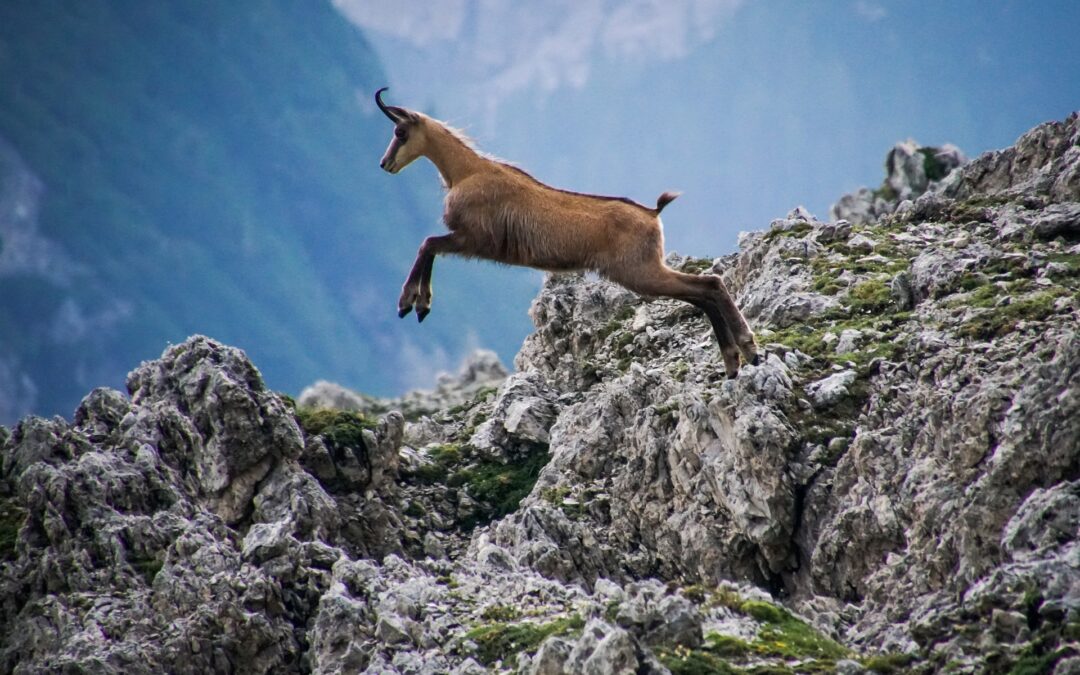While Poland’s census of its human inhabitants takes place only once every decade, naturalists in Tatra National Park on the country’s mountainous southern border with Slovakia count how many chamois – a protected species of goat-antelope – live there twice every year.
This autumn’s count was completed yesterday by teams from both countries, which will now compare and compile results before announcing them next week.
The bilateral action is the oldest such cross-border cooperation in the world. It has found that the population of chamois in the mountains, which dropped as low as 241 at the end of the 20th century, has since rebounded.
Dziś liczyliśmy kozice 🤩
I było pięknie!Wyniki wkrótce… 🙂
📸 Marcin Bukowski #TPN#Tatry pic.twitter.com/78Lnbud1eX
— TPN (@Tatrzanski_PN) October 26, 2021
Staff from the two countries’ national parks were hopeful that the weather conditions would help them to count the chamois (Rupicapra rupicapra), which is native to the Tatra mountains and other European ranges, reports the Polish Press Agency (PAP).
The previous census, which took place in early July, was made difficult by high temperatures, resulting in the animals retreating into shady crevices where they are hard to spot. This prevented naturalists from gauging how many kids were born in spring.
“The autumn weather tends to be more stable and years of experience show that this period is the most appropriate for counting the population of chamois, which are not hiding from the heat and whose offspring from this year are already adult,” explained Jozef Hybler, a zoologist from the Slovakian Tatra National Park.
“Furthermore, the forthcoming rut causes increased movement of the chamois, so it is more likely that the results of the action will be reliable,” Hybler told PAP.
The naturalists also hope to make the results more accurate by extending the count from the usual one day to two. The park on each side of the border is divided into sectors, each of which is covered by staff, including those usually working in the office as well as volunteers.
Walking towards the mountain ridge, they chart the animals they see, the time and place, direction of movement, and additional information including sex and offspring.
The combined count will be announced after a meeting between naturalists from the Polish and Slovakian Tatra National Parks. They have been counting the goat-antelopes together since 1957, making the collaboration the oldest of its type in the world, reports PAP.
The record number of chamois observed in the Tatras came in 2018, when 1,431 – 421 on the Polish side of the border – were counted, including 121 young. The lowest ever figure was 241 in 1999. In autumn last year, 983 were observed, the fewest since 2011.
“Apart from data on the number of chamois, the action is also a source of valuable information on the health of the population,” Hybler told PAP before the last count. “At the same time we also observe other species of protected animals.”
“During previous chamois counts there was an attack of a lynx on a chamois…and an eagle attack on a bear, for example,” he added.
Jesienne liczenie kozic za nami!🙂
18 października padł rekordowy wynik – w sumie naliczono w Tatrach 1431 kozic (421 po polskiej stronie), w tym 121 młodych tegorocznych (46 w polskich Tatrach). pic.twitter.com/KJClsg0ktN— TPN (@Tatrzanski_PN) November 8, 2018
Main image credit: Pixabay/Rottonara

Ben Koschalka is a translator, lecturer, and senior editor at Notes from Poland. Originally from Britain, he has lived in Kraków since 2005.




















